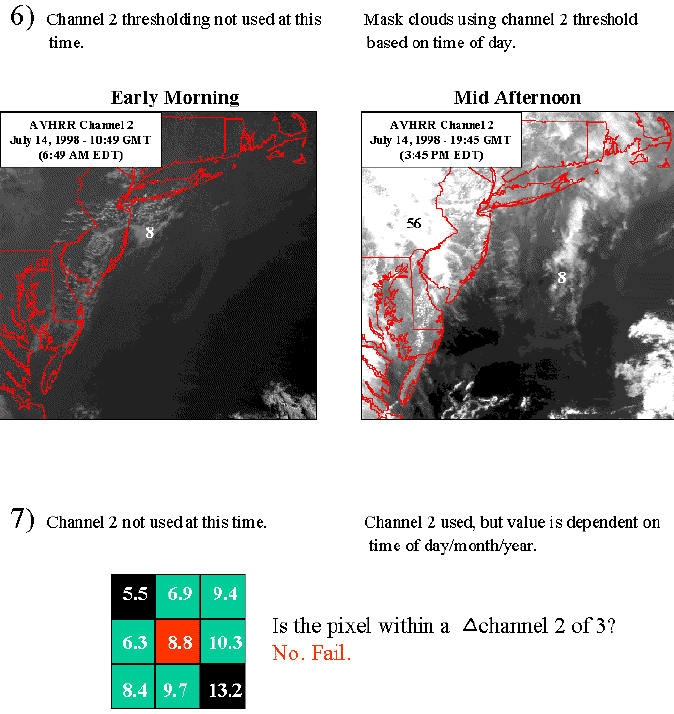REVIEW on Cloud Removal


When reviewing the 7 cloud removal steps above, it became obvious to
us that using a standardized cloud removal algorithm on our coastal sea
surface temperature data was a bad idea. In test 2 for example, you may
want to change the sensitivity (delta t) based on the image. Less sensitivity
would be good for an upwelling image while more may be appropriate for a
non upwelling image. In test 6, a standardized reflectance threshold for
cloud brighness cannot be used because sun angle, image pass time, time of
month, and time of year all play a part in the reflectance values of clouds.
A morning image maximum reflectance (value 8) may be the minimum in an
afternoon pass (ie it's brighter in the afternoon than early morning).
So, we simply analyze each image and determine the cloud removal
specifications on a case-by-case basis. This process is more time consuming
than a standard algorithm, but sometimes you must sacrafice time to get
perfection.
Now let's look at some
SeaWiFS navigation information.
.


